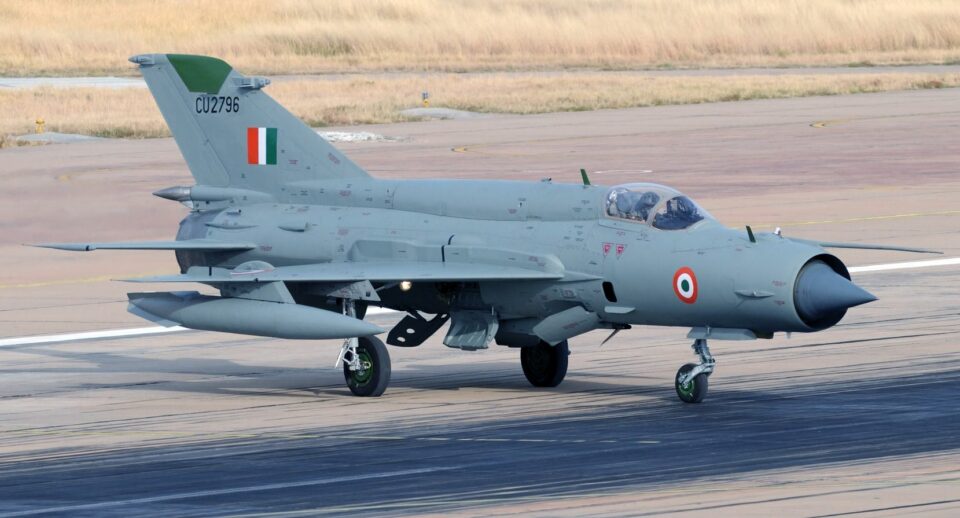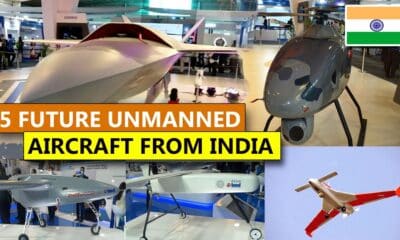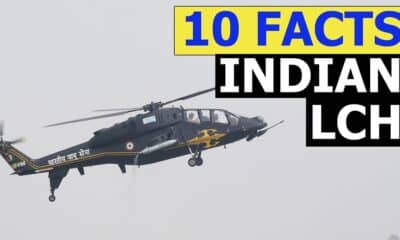Aerospace
How many MiG-21 jets are there in the IAF ? when will it be phased out
Here is details about how many MiG 21 fighters have crashed since they were first used by the Indian Air Force.

The fighter plane MiG 21 of the Indian Air Force crashed in Rajasthan, India, yesterday. There are no rumors building up or questions being directed at the Indian Air Force regarding the continued use of such aircraft in the air force despite their poor safety record and history of mishaps.
Is the MiG-21 a good plane?
The MiG-21 has been used by about 60 nations on four continents, and six decades after its debut flight, it is still in widespread use in many countries. The MiG 21 was created in the Soviet Union by Mikoyan Gurevich. It made its initial flight on June 16, 1955, and was later released as the MiG 21F for military use. As of right present, the Soviet, Indian, Croatian, and Romanian Air Forces are the four defenses operating this fighter plane. According to the source, 11,496 of this aircraft were built between 1959 and 1989, when it went out of production.
The McDonnell Douglas F-15 Eagle and General Dynamics F-16 Fighting Falcon have since surpassed it, making it the most-produced supersonic jet aircraft in aviation history, the most-produced combat aircraft since the Korean War, and the combat aircraft with the longest manufacturing run.
How many MiG-21 are there in Indian Air Force?
India is the country that uses the MiG 21 fighter the most. As opposed to the western fighter jets, India purchased the MIG 21 in 1961. The Soviet Union provided Indian technology and the right to assemble aircraft locally as part of the agreement.
More than 1200 MiG fighters have been introduced to the Indian military since 1963. India currently has 113 fighter aircraft in service. However, the aircraft has experienced numerous safety issues.
Why The Fighter Plane is Called ‘Flying coffins’?
Due to repeated crashes, this plane was also known as the widow maker and the flying coffins. The aircraft’s safety record was poor.
The fighter jet has earned the nickname “flying coffin” as a result of its frequent crashes. Due to the accidents, it is also referred to as the “widow-maker.” The aeroplane has recently had an extremely bad safety record.
This fighter plane has claimed the lives of more than 180 Indian pilots and 50 civilians since 1970. In the past 60 years, the Indian Air Force has lost around 400 MiG-21 aircraft in crashes.
What is the main contributor to MiG 21 fighter plane crashes ?
Older design components and compatibility have serious problems, and this plane’s engine design is also a significant problem. Even a small bird can cause an engine surge or seizure and flame out when the engine is in afterburner because it works so closely to its surge line. Predictive maintenance is difficult because the aircraft is almost 35 years old and is an old one.
What will happen to the MiG-21 fighter jet of the Indian Air Force?
The choice has been made by the Indian Defense department. The Indian Air Force (IAF) chose to retire one more squadron of the MiG-21 Bison aircraft by September 30 and the whole fleet by 2025 after the IAF fighter plane disaster claimed the lives of two pilots. The investigation into the accident’s cause was mandated by the court of inquiry.
The indigenous fighter jet Tejas aircraft was intended to replace the MiG 21 in a phase-out plan by the Defense Department. Thus, a plan will be put into action as soon as the aircraft are introduced to the squadron; by 2025, nearly all MiG 21 fighter jets will have been phased out of service. The IAF is also preparing a new fleet for the future, complete with upgraded features and armaments.

Aerospace
Indigo will soon launch Air Taxi Service in India

InterGlobe Enterprises, the parent brand of IndiGo, is set to revolutionize travel in India with its upcoming air taxi service.
Scheduled for a potential launch in 2026, this innovative venture promises a seamless journey for passengers between two bustling hubs. Delhi and Gurgaon in Haryana. The forthcoming service is projected to revolutionize the daily commute, offering passengers a swift aerial journey covering the distance in a mere 7 minutes.
This remarkable efficiency contrasts starkly with the conventional 90-minute drive, underscoring the immense time-saving potential for commuters. The anticipated fare, ranging from Rs 2,000-3,000, makes this innovative mode of transport not only swift but also remarkably competitive in pricing.
At the heart of this ambitious endeavor lies a strategic partnership with Archer Aviation, a pioneer in electric vertical takeoff and landing (eVTOL) aircraft technology. Under this collaboration, Archer will supply 200 state-of-the-art eVTOL aircraft, representing an investment of US$ 1 billion. These cutting-edge aircraft, capable of accommodating up to four passengers alongside the pilot, epitomize the future of sustainable air travel.
Powered by six battery packs, Archer’s eVTOL aircraft boast rapid charging capabilities, enabling a swift turnaround between flights. With a charging time of just 30-40 minutes, these eco-friendly aircraft ensure minimal downtime, maximizing operational efficiency.
Similar services are anticipated to be introduced by the joint venture in Bengaluru and Mumbai as well. Nevertheless, the service rollout period has not yet been made public by the company. Next year, it is anticipated to get its certification. Following this, the company will start the certification procedure with the Directorate General of Civil Aviation (DGCA).
Aerospace
Which is bigger 777x or 787 aircraft ?

The 777X is a new series of the Boeing 777 family and is designed to be larger and more efficient than its predecessor. It features two variants: the 777-8 and the 777-9, being the larger of the two.
The Boeing 777X emerges as the larger sibling within the Boeing family, representing a significant leap forward in both size and efficiency. Comprising two variants, the 777-8 and the 777-9, the latter takes the crown as the larger of the two. With its expansive fuselage and impressive wingspan, the 777X is tailored for long-range journeys and boasts a substantial passenger capacity.
On the other hand, the Boeing 787, affectionately known as the Dreamliner, occupies a niche in the market as a smaller yet formidable aircraft designed for medium to long-range flights. Its distinguishing feature lies in its composite fuselage, a technological marvel that renders it lighter and more fuel-efficient compared to conventional aluminum counterparts. The Boeing 777X is larger than the Boeing 787 aircraft.
When it comes to passenger capacity, the 777-9 reigns supreme, typically accommodating a sizeable contingent of 400-425 passengers in its standard configuration. In contrast, the 787, with its more modest dimensions, typically carries between 240-290 passengers, depending on the variant and layout.
One of the remarkable innovations introduced with the 777X is its folding wingtips, a feature designed to address the logistical challenges of accommodating such a large aircraft in conventional airport gates. These folding wingtips enable the 777X to retract its wings, allowing it to fit into gates designed for smaller aircraft while still reaping the benefits of an extended wingspan during flight, thereby enhancing fuel efficiency and operational flexibility
Aerospace
China Secures Production Certificate for Mass Production of Pilotless eVTOL Aircraft

The first passenger-carrying pilotless electric vertical takeoff and landing (eVTOL) aircraft in the world, the EH216-S, has received the Production Certificate for its eVTOL aircraft from the Civil Aviation Administration of China (CAAC).
This is a significant milestone for EHang Holdings Limited, the leading UAM technology platform company in the world. This outstanding accomplishment is another big step towards mass manufacturing for the eVTOL aircraft and the ensuing commercial operations, building on the ground-breaking acquisition of the Type Certificate and the Standard Airworthiness Certificate for the EH216-S.
The PC is a crucial certificate that the aircraft maker receives from the CAAC, the country’s aviation authority. By obtaining this certificate, EHang has demonstrated that it has set up a quality management system for mass production that satisfies the airworthiness regulation standards set forth by the CAAC, and the company has been given permission to continue producing mass quantities.
It is also a strong guarantee of the calibre of the goods made by EHang. Raw materials, supplier management, manufacturing organisation, production quality control, aircraft pre-delivery test, after-sales repair and maintenance, etc. are all included in the mass production quality management system for the EH216-S.
To ensure that every aircraft and its components that roll off the production line strictly adhere to the approved type design and safety requirements, the system sets clear guidelines and documentation for every step in the production procedure. This ensures comprehensive traceability and safety control.



























